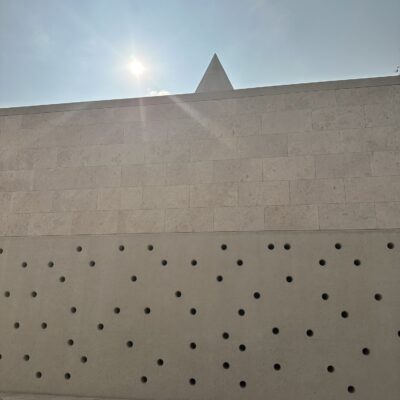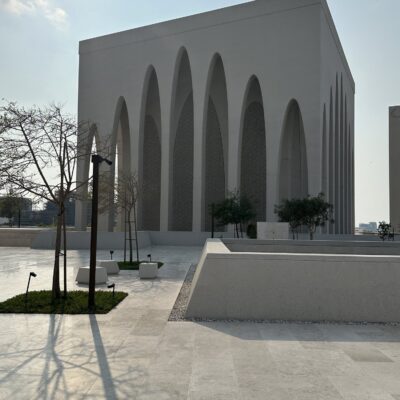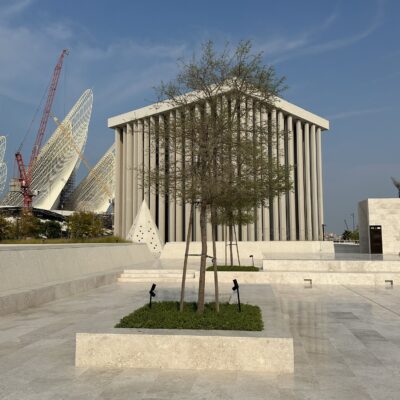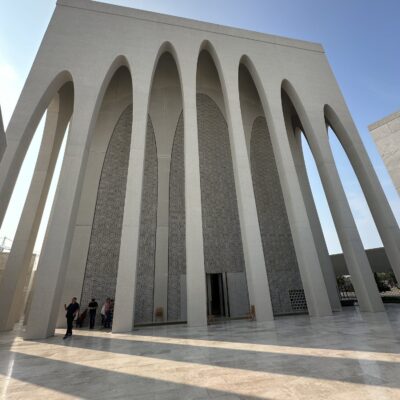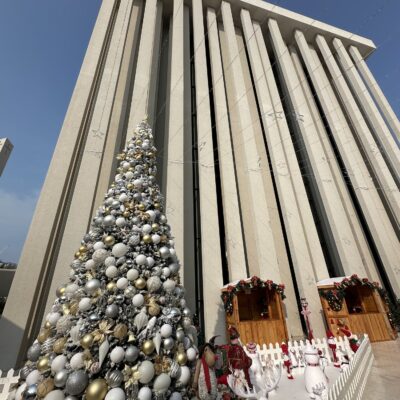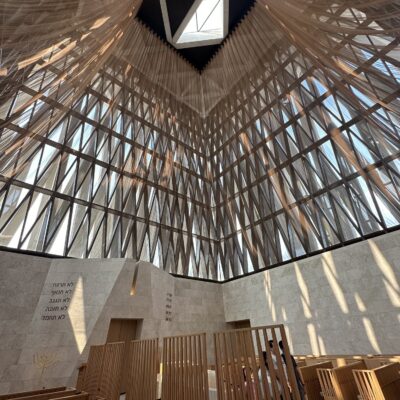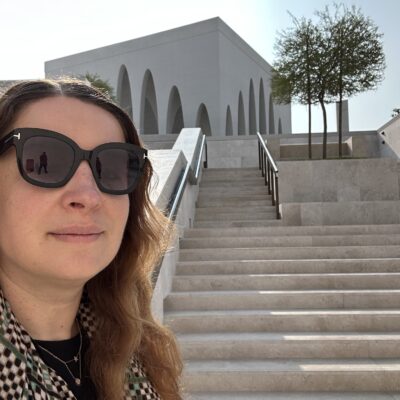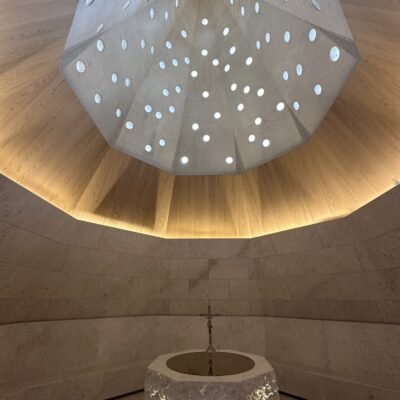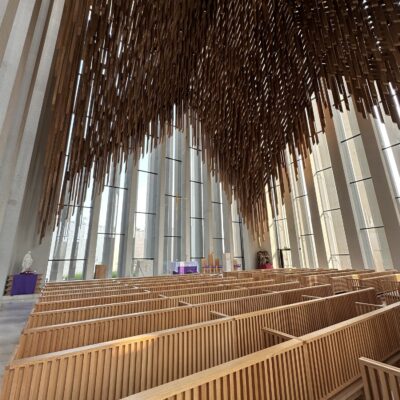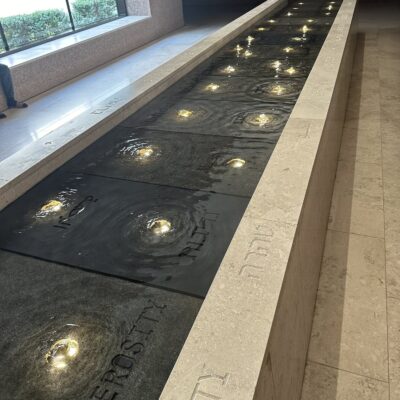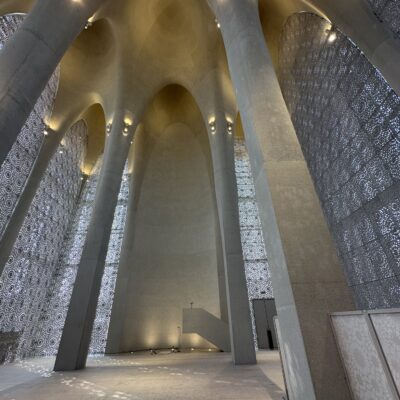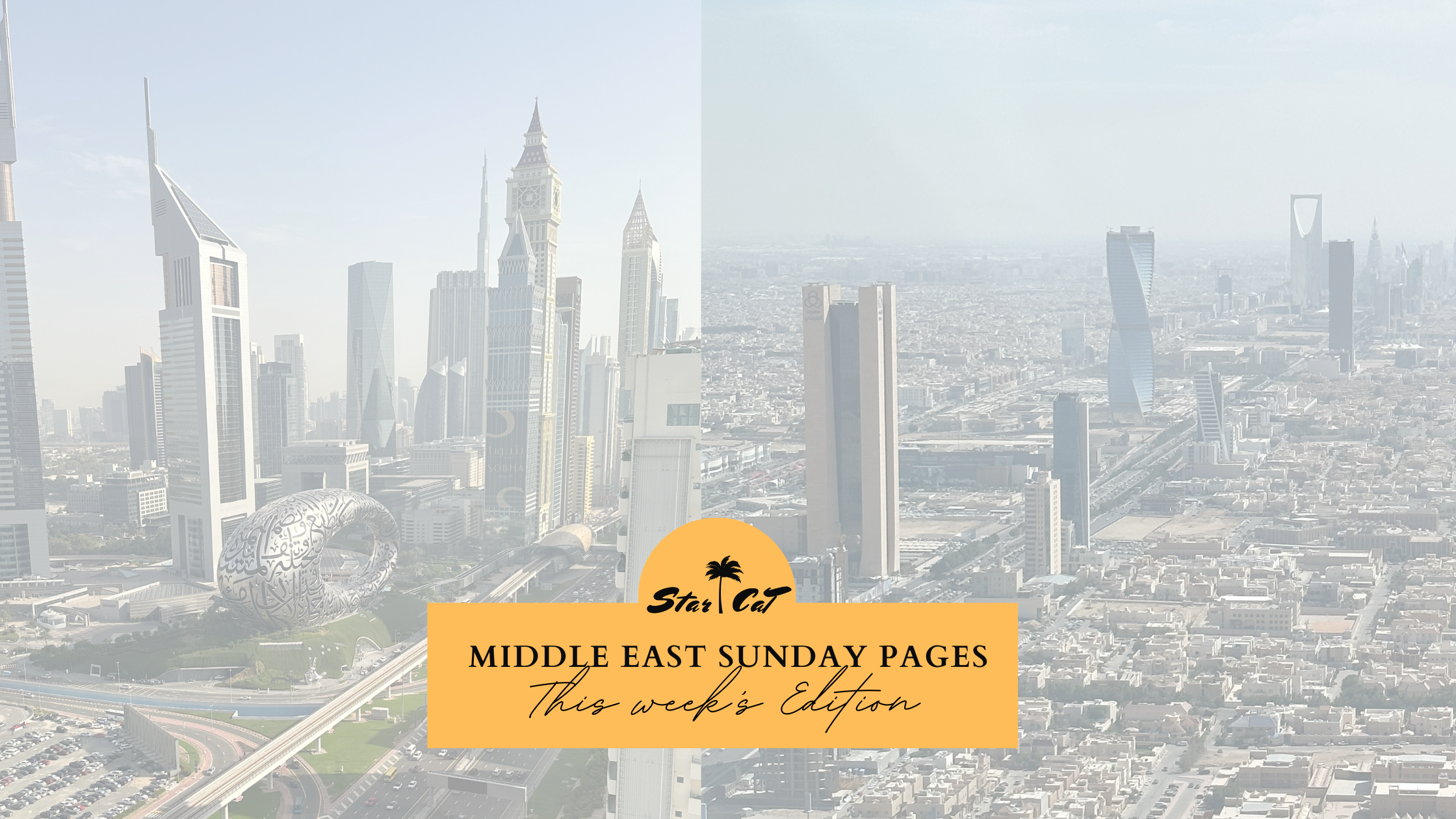
Abrahamic Family House
In a world often divided by religious and cultural differences, there emerges a beacon of hope – the Abrahamic Family House. This architectural marvel stands as a testament to the power of unity and interfaith harmony, bringing together three major Abrahamic religions: Judaism, Christianity, and Islam. In this post, we will explore the significance of the Abrahamic Family House and its role in fostering understanding, tolerance, and coexistence among diverse communities. We bring you a new topic from the Gulf every week, so don’t miss another edition by subscribing to our Middle East Insights Newsletter.
The Vision Behind the Abrahamic Family House
The Abrahamic Family House, located on Saadiyat Island in Abu Dhabi, was conceptualised with a vision to promote peaceful coexistence and dialogue among followers of different faiths. This visionary project was initiated by the Higher Committee of Human Fraternity, a group dedicated to building bridges between religions and cultures. Inspired by the Document on Human Fraternity for World Peace and Living Together, signed by Pope Francis and the Grand Imam of Al-Azhar, the Abrahamic Family House aims to celebrate the shared values of love, compassion, and fraternity that unite the Abrahamic traditions.
The Three Houses
The Abrahamic Family House comprises three separate houses of worship – a mosque, a church, and a synagogue – all nestled together on the same site. Each of these houses represents a distinct Abrahamic faith, creating a symbolic landscape of unity in diversity. The mosque is named after Imam Al-Tayeb, the Grand Imam of Al-Azhar, and the church is dedicated to Saint Francis of Assisi, a symbol of peace and harmony. The synagogue, named after Rabbi Abraham Skorka, emphasises the importance of dialogue and understanding in fostering a shared humanity.
We have covered a variety of interesting topics about the Gulf, what life is like now and so much more in our blog, Middle East Sunday Pages, so have a look and make sure you don’t miss any future editions by joining our mailing list. It is totally free!
Architectural Symbolism
The architectural design of the Abrahamic Family House is a masterpiece that blends modernity with tradition, reflecting the essence of each religion it represents. The structures are interconnected by a communal space known as the Garden of Fraternity, symbolising the interconnectedness of humanity and the need for peaceful coexistence. The design incorporates elements from Islamic, Christian, and Jewish architectural traditions, creating a harmonious visual representation of the shared roots of these faiths.
Fostering Interfaith Dialogue
One of the primary goals of the Abrahamic Family House is to serve as a platform for interfaith dialogue. The project hosts various events, conferences, and cultural exchanges aimed at promoting understanding and mutual respect among people of different religious backgrounds. By providing a space where individuals can engage in open and constructive conversations, the Abrahamic Family House becomes a catalyst for breaking down stereotypes and fostering a spirit of cooperation.
Tolerance and understanding is a key value of Star-CaT and this is why we have created so many resources, so no one has to go to the Middle East unprepared. If you want ongoing help, have your questions answered, contact us here.
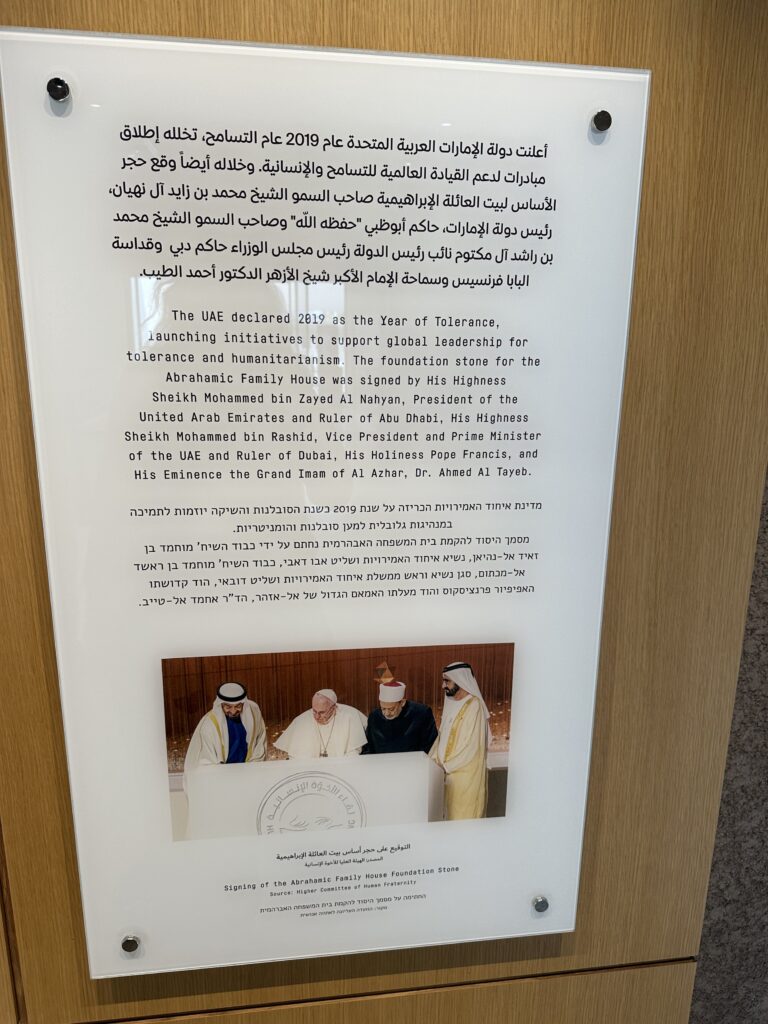
The Abrahamic Family House holds a profound connection with the broader context of the Abraham Accords, signifying a significant step toward peace and cooperation in the Middle East. The Abraham Accords, which were initiated in 2020, marked a historic diplomatic breakthrough, establishing formal normalisation of relations between Israel and two Arab nations, the United Arab Emirates (UAE) and Bahrain. While the Abrahamic Family House is located in Abu Dhabi, the capital of the UAE, it reflects the broader spirit of reconciliation and collaboration fostered by the Abraham Accords.
-
Promoting Interfaith Ties within the Abraham Accords Framework: The Abrahamic Family House aligns with the ethos of the Abraham Accords by emphasising interfaith dialogue and cooperation. The Accords, named after the common patriarch Abraham revered by Judaism, Christianity, and Islam, aim to build bridges between different faiths in the region. The Abrahamic Family House becomes a tangible representation of this vision, providing a physical space where people from different religious backgrounds can come together and engage in meaningful conversations.
-
Regional Harmony and Cultural Exchange: The Abraham Accords seek to foster regional stability by encouraging economic, cultural, and technological collaboration. The Abrahamic Family House plays a crucial role in this context by promoting cultural exchange and understanding among the Abrahamic religions. The architectural symbolism of the three houses of worship coexisting harmoniously mirrors the broader aspiration for peace and coexistence in the Middle East.
-
Human Fraternity as a Common Thread: Both the Abrahamic Family House and the Abraham Accords share a common thread of promoting human fraternity and peaceful coexistence. The Human Fraternity Document, which inspired the Abrahamic Family House, underscores the importance of mutual respect and understanding among people of different faiths. Similarly, the Abraham Accords emphasise the common values that unite the signatory nations, transcending historical differences and working towards a shared future.
-
Expanding the Circle of Peace: The House contributes to the broader narrative of expanding the circle of peace in the region. As more nations and communities embrace the principles of the Abraham Accords, the hope is that the spirit of cooperation and understanding exemplified by the Abrahamic Family House will inspire similar initiatives elsewhere, creating a ripple effect of peace and reconciliation.
The Abrahamic Family House is not just a standalone symbol of interfaith harmony but is intricately connected to the principles and goals of the Abraham Accords.
It stands as a shining example of what can be achieved when people of diverse backgrounds come together with a shared vision of peace and unity. In a world often marred by religious conflicts, this architectural wonder serves as a powerful symbol of hope, reminding us of the common humanity that unites us all. As we embrace the values of love, compassion, and fraternity, the Abrahamic Family House paves the way for a future where different faiths coexist in harmony, fostering a world of understanding and acceptance.
In summary, understanding different religions, knowing how to behave requires cultural awareness and a willingness to embrace differences.
By immersing yourself in the the Gulf culture and using the support offered by our Middle East Consultancy, you can lay the groundwork for a successful and fulfilling experience in the region.

